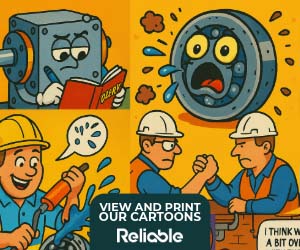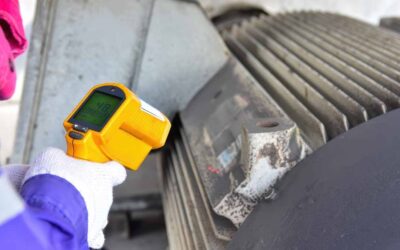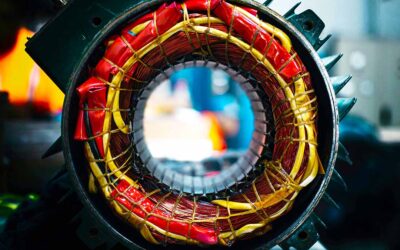Asset Management is defined as the ‘coordinated activities of the organization to deliver value from assets’ (GFMAM Asset Management Landscape 3rd edition). One of the keywords in this definition is ‘coordinated,’ and yet, silos and barriers to collaboration and coordination continue to exist in so many organizations.
Asset management is a team sport! We need to ask ourselves what increased value we could realize by breaking down these silos and working to coordinate our activities.
Asset management is a team sport—coordination isn’t optional, it’s essential.
For reliability professionals and asset managers, breaking down these silos is not only a strategic advantage. Still, it is also at the core of improving asset reliability and maintenance strategies, lowering the total cost of ownership, and improving overall performance across the entire lifecycle.
Impact of Organizational Silos on Reliability
In siloed organizations, departments and teams work in isolation; each focused on their own goals and decisions without consideration for the overall organizational goals and objectives or how their decisions may impact other teams.
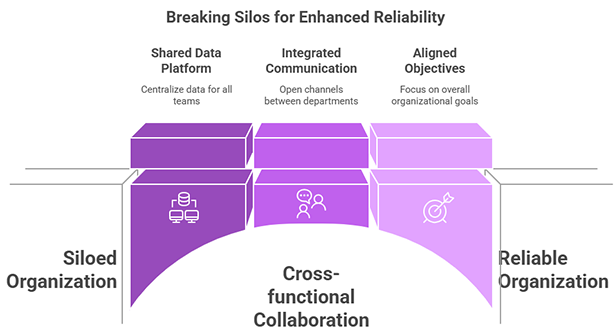
One of the most common symptoms of organizational silos is duplication of effort. Is the maintenance team even aware of the equipment performance data being collected, tracked, and analyzed by the reliability team? This can lead to missed opportunities for early intervention and proactive maintenance activities.
Are asset managers making significant capital investment decisions without being aware of the specific reliability or maintainability concerns identified by these other teams? A lack of shared data and information can lead to poorer decision outcomes, including inefficient use of resources, higher total cost of ownership (TCO) and operating expenses (OPEX), and an inability to identify and act on emerging issues before they escalate.
Silos delay decisions, duplicate efforts, and drive up costs unnecessarily.
Silos can also contribute to delayed decision-making. When the various business functions are not aligned, decisions regarding asset maintenance activities, repairs, and replacements can become bottlenecked or delayed, as each team must collect its own data and perform analysis before making a decision.
For example, poor communication between the Operations and Maintenance departments about required upcoming maintenance activities may result in disrupted production schedules, unscheduled downtime, and financial losses. Clear communication between the teams can resolve many issues affecting overall productivity and asset reliability, but this doesn’t happen in siloed workplaces.
Benefits of Collaboration
As noted above, Asset Management is a team sport, and it is all about delivering value. By breaking down the silos between the various departments, we can create a more unified approach to achieving the organizational goals and objectives. One of the main contributors from the reliability and maintenance teams is improved asset reliability and overall operational performance, leading to better organizational outcomes.
Here are some of the key benefits that can be seen from improved collaboration and coordination in asset-intensive industry sectors. These are generally applicable in other sectors while recognizing that levels of service (LOS) for sectors such as transit, water treatment, community housing, and hospitals may be the target instead of profitability.
Enhanced Proactive Maintenance Strategies
When all teams, such as reliability, maintenance, operations, asset management, engineering, and supply chain, work together, decisions are based on a comprehensive and holistic understanding of the situation. For example, reliability professionals may identify an emerging pattern in the asset performance, signaling that a repair will be required. Through open communication, the Reliability team can alert the Maintenance team.
The Maintenance team can then plan and schedule the repair before an actual failure occurs, coordinate the scheduling with Operations to minimize production impact, work with the Supply Chain team to ensure that the parts are available, and execute the repair. Strong alignment and communication between the various teams support data-driven asset health monitoring, performing timely and effective repairs while minimizing downtime, overall costs, and risks to production.
Effective Resource Allocation
Collaboration between teams encourages organizations to allocate their resources, both people and dollars, more effectively. When asset managers, reliability professionals, and maintenance teams communicate regularly, they can share data and analyze asset conditions, expected lifecycles, and criticality levels.
This information enables better decision-making on ‘run, repair, replace?’ and allows better planning for resource allocation, ensuring that people and financial resources are dedicated to the most critical issues. For example, suppose the reliability team is aware of an asset’s declining performance. In that case, the maintenance team can prioritize efforts to address the issue before a failure occurs.
The asset management team can evaluate where the asset is in its lifecycle and whether it is appropriate to consider a replacement over a repair based on the estimated cost to repair, asset obsolescence (for example, instrumentation and control systems), and the estimated future demand for the product, etc.
Increased Innovation
When various teams collaborate, it sparks the exchange of ideas, knowledge, and adoption of leading practices. We often see innovative solutions emerging that can improve asset management, reliability, and maintenance processes, enhance the system design, and optimize maintenance practices.
For example, maintenance staff aware of the new technologies proposed by the engineering or asset management teams may suggest innovative ways to enhance equipment reliability, reduce wear and tear, or design for maintainability. Similarly, reliability professionals may share data-driven insights from existing equipment with asset managers or project managers to identify more cost-effective and sustainable long-term strategies.
How to Break Down Silos and Encourage Collaboration
The benefits of collaboration and the ‘coordinated efforts of the organization to deliver value from assets’ may be compelling, but how do organizations take the steps required to break down these existing silos? Here are a few suggestions to encourage a culture of cross-functional communication and teamwork while recognizing that each organization has its own culture that needs to be considered.
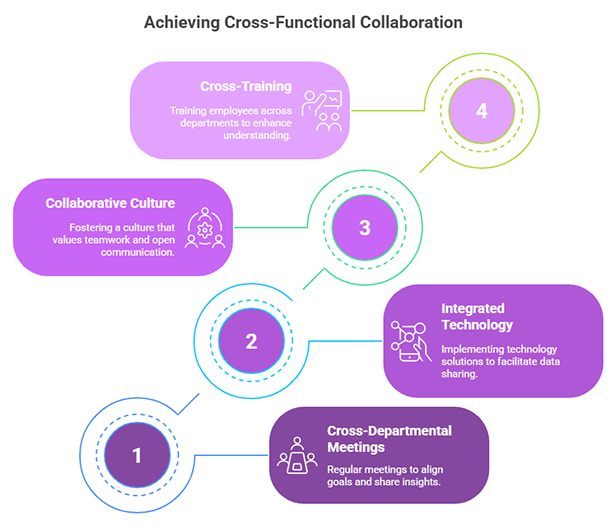
Implement Cross-Departmental Meetings
Regular meetings between different teams can encourage and focus all teams to work together on achieving aligned goals and objectives, timelines, and key issues.
For example, scheduling short, focused joint meetings between maintenance, reliability, asset management, engineering, and supply chain personnel creates a space for each team to share their insights, concerns, and recommendations and collectively address any issues.
The focus on shared goals, such as improved asset reliability, reduced downtime, increased production throughput, or lower overall costs to produce, can foster improved teamwork and help to identify cross-department solutions.
Investment in Integrated Technology Solutions
Technology plays an outsized role in breaking down silos. When asset management, reliability, and maintenance tools are deployed and integrated across departments, a huge barrier to data sharing disappears.
For example, centralized asset management or maintenance systems that combine asset performance data, maintenance work history, and engineering design parameters enable all stakeholders to access the same information simultaneously. This supports coordination between teams, faster decision-making, and a more efficient workflow.
Stronger collaboration means better repairs, smarter investments, and fewer surprises.
Foster a Collaborative Culture
Encouraging a culture of collaboration and coordination begins with leadership. Leaders should emphasize and role model the importance of teamwork, open communication, shared responsibility, and collaboration. When employees see that coordination and collaboration are valued and are actively encouraged at all levels, they are more likely to engage with colleagues from other departments and contribute to meeting collective goals.
Rewarding and recognizing teamwork and cross-functional problem-solving can further motivate employees to continue to break down the silo barriers and work together towards common objectives. Some reliability-focused examples include cross-functional teams contributing to root cause analysis, building maintenance strategies based on reliability-centered maintenance (RCM) principles, and collaboratively setting the warehouse min-max and safety stock levels for critical parts.
Cross-Training and Knowledge Sharing
Cross-training employees in different departments helps to increase understanding and empathy for the challenges faced by the other teams. By having reliability specialists, maintenance employees, and asset managers understand each other’s roles and responsibilities, they can work more effectively together.
In this author’s experience, my team trained many early career engineers in reliability practices. Several inevitably moved on to other departments as their careers advanced.
Still, they all knew the importance of the reliability roles and practices, how the reliability, maintenance, and asset management teams worked together, and how each team contributed to meeting the company’s objectives. Asset management as a team sport was on full display!
The Path Forward for Asset Teams
Breaking down the silos between teams is more than just a strategy for improving internal communication. It is essential for driving successful asset management and reliability efforts. A collaborative and coordinated cross-functional approach supports proactive maintenance strategies, effective resource allocation, and increased innovation.
The results of coordination speak for themselves: lower costs, better uptime, smarter decisions.
Organizations can unlock the value of their assets through open communication, shared data and technologies, and a collaborative culture. For reliability professionals and asset managers, it is time to break down silos and realize the value of coordinating activities now. The results will speak for themselves in terms of improved efficiency, cost savings, and long-term success outcomes.




